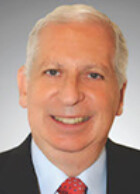Clubs have had to reorganize their club to meet social distancing rules and local regulations. The concept of how a member uses the facility is radically different, especially in the initial stages.
Q: In addition to cleaning signage, will there be any additional signage throughout the facility?
Many clubs are requiring members to check-in via a mobile app, allowing for a more contactless experience. If there is a keypad and stylus for signing in, a staff member sanitizes them between users. Floor markings have been added throughout many facilities—or even in the outside entryway—to provide visuals on new 6-foot proximity rules.
Q: What are the trends on using a thermometer to monitor staff prior to entering the facility?
In many states, temperature checks or screenings are required. Staff wear personal protective equipment (PPE) to avoid any virus transmission. Frequently, plexiglass shields are created at the front desk to protect the staff.
Q: What does the new member experience look like in your space?
Social distancing is paramount in the fitness equipment area. In the cardiovascular equipment area, many pieces have been moved farther apart. Many are still there but unplugged with a sign indicating it's out of service. Some have even been moved to other areas with greater spacing.
The strength equipment area also needs to be compliant. Some machines have signs of nonuse. Some now supply alternate days if there are no duplicate machines. All users are separated out. The free weights area now may involve fewer benches, some bolted in place to avoid movement and proper spacing. There's signage on how to deal with dumbbells and free weights to limit sharing germs.
In some states, an overall number of users is limited by regulations. This can be monitored by the mobile app for the gym. As regulations ease, the use of the app can monitor the given limits. In many cases, the app will control how many users there can be in a given area, a class or a club service area. This is critical for clubs to comply with strict early limitations and the process of sequential openings of each part of the club.
Q: Should our pool/locker rooms/water fountains be open? What about personal training or group exercise?
Typically, most states have not permitted clubs to open up all of its facilities and services at its initial stage. So, it is likely that group exercise studios, childcare areas, basketball courts, locker rooms, and use of other social areas would be banned until further notice. If a locker room can only be used for its toilet area, it must be cleaned immediately and frequently. Once any of these social areas are open, systems for distancing, cleaning, and hallway traffic must be enforced. For example, many are removing benches in the locker rooms, tying off some of the lockers to create spacing, removing all toiletries on counters, removing towel service, etc. Water fountains are closed off, but water refilling stations are still in use.
Q: Do you think it could be helpful to have a friendly PA system to communicate with your members when they are at the gym, guiding them with the new protocols, making it friendly and lively etc.?
To help teach the members proper behavior, regular announcements are being made throughout the gym, typically through a public address system. In some cases, clubs have taken advantage of turf areas to move equipment around. In a few cases, outdoor space—even in club parking lots—is contemplated for member use.
